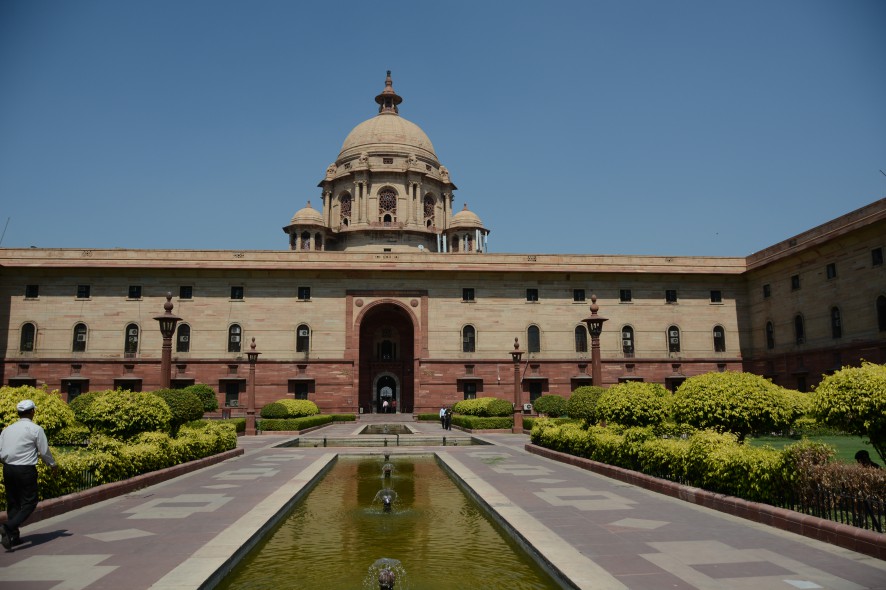The Union Cabinet under the Chairmanship of Prime Minister Shri Narendra Modi has approval the River Ganga (Rejuvenation, Protection and Management) Authorities Order, 2016. The Order lays down a new institutional structure for policy and implementation in fast track manner and empowers National Mission for Clean Ganga to discharge its functions in an independent and accountable manner. It has been decided to grant a Mission status to the Authority with corresponding powers under Environment (Protection) Act, 1986 to take cognizance of the provision of the said Act and follow up thereon. Similarly, there is adequate delegation of financial and administrative powers which will distinctly establish NMCG as both responsibility and accountability centre and effectively accelerate the process of project implementation for Ganga Rejuvenation.
Salient Features:
Briefly, the Order envisages:
1. Creation of the National Council for River Ganga (Rejuvenation, Protection and Management), as an Authority under the Chairperson of Hon’ble Prime Minister, in place of the existing NGRBA for overall responsibility for superintendence of pollution prevention and rejuvenation of river Ganga Basin.
2. Setting up of an Empowered Task Force chaired by Hon’ble Minister of Water Resources, River Development and Ganga Rejuvenation to ensure that the Ministries, Departments and State Governments concerned have:
- an action plan with specific activities, milestones, and timeliness for achievement of the objective of rejuvenation and protection of River Ganga,
- a mechanism for monitoring implementation of its action plans.
It will also ensure co-ordination amongst the Ministries and Departments and State Governments concerned for implementation of its action plans in a time bound manner.
3. Declaration of National Mission for Clean Ganga (NMCG) as an Authority with powers to issue directions and also to exercise the powers under the Environment (Protection) Act, 1986 to enable it to carry out efficiently its mandate. The NMCG will have a two-tier management structure with a Governing Council (GC), to be chaired by DG, NMCG. Below the GC, there will be an Executive Committee (EC) constituted out of the GC, to be chaired by the DG, NMCG.
NMCG will comply with the decisions and directions of the National Ganga Council and implement the Ganga Basin Management Plan approved by it; co-ordinate and carry out all activities necessary for rejuvenation and protection of River Ganga and its tributaries.
4. At the State level, it is proposed to create the State Ganga Committees in each of the defined States as Authority, to function as Authorities in respect of each State and perform the superintendence, direction and control over the District Ganga Protection Committees under their jurisdiction.
5. Similarly, the District Ganga Committees in each of the Ganga Bank Districts will carry out the assigned tasks as an Authority at the district level, to take cognizance of local threats and needs of river Ganga and conceptualise such measures as necessary to ensure overall quality of water in river Ganga and monitor various projects being implemented.
The proposed structure is to be implemented through the subordinate legislation route by issue of an Order invoking the provisions under Section 3 of Environment (Protection) Act, 1986 (29 of 1986) relating to creation of authorities to achieve its objectives. The other main features of the proposal are as follows:
- This will give more teeth to the NMCG for Clean Ganga for the environmental protection/rejuvenation of River Ganga. It will also ensure proper co-ordination with the local bodies and compliance with the directions of NMCG for pollution abatement of the river Ganga.
- NMCG will, however, take action only in the event when required action is not taken by CPCB. CPCB shall also take action jointly with NMCG under the provisions of said Act.
- A special focus of the revamped structure would be to maintain required ecological flows in the river Ganga with the aim of ensuring water quality and environmentally sustainable development.
For taking up fast track creation of sewerage treatment infrastructure in Ganga basin, an innovative model based on Hybrid Annuity has also been approved. This will ensure that the infrastructure created under the project is operational on a sustainable basis.
In order to ensure transparency and cost effectiveness, a provision for concurrent audit, safety audits, research institutions and financial framework has been made.
Background:
The Ganga Action Plan (GAP) Phase-I was launched in 1985 and later GAP Phase-II was initiated in 1993 with the objective of improving the water quality of river Ganga and was later expanded to include some of its tributaries also. In May, 2015, the Government approved the Namami Gange programme as a comprehensive mechanism to take up initiatives for rejuvenation of river Ganga and its tributaries as a Central Sector Scheme with hundred per cent funding by the Union Government. The programme, despite making moderate gains in arresting the declines in water quality, had certain limitations in implementation.
Although, the NMCG has been functional as a registered Society since 2012 its role has been largely limited to fund the projects to implementing organisations. It neither had the mandate to take cognizance of various threats to river Ganga nor the powers to issue directions to the concerned authorities/polluters. While the organisation has been made responsible as custodian of river Ganga in both public eye as well as various courts, the mission is grossly ill-equipped to handle such expectations.
It is expected that the move will ensure effective abatement of pollution and rejuvenation of the River Ganga; maintain ecological flows in the River; impose restrictions on polluting industries; and carry out inspections to ensure compliance. In addition, it is proposed to maintain and disseminate data and carry out research on the condition of the river.
Press Information Bureau






